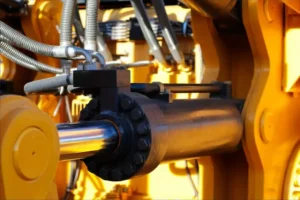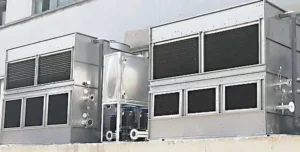
Copper plays a dual role in steel production, serving both as a beneficial alloying element and a potentially harmful impurity. Controlling copper content during the melting process is crucial. Below is a detailed analysis of the control points for managing copper in melting.
Control of alloy element copper
As an alloying element, copper is not easily oxidized and has a low melting point. Special attention is required during the melting process:
- Ensure Uniform Distribution of Copper in the Molten Steel: After adding copper, stir the molten steel with high power to ensure an even distribution.
- Low-Temperature Rapid Pouring: To reduce segregation during the solidification process, use low-temperature rapid pouring techniques.
- Shorten Residence Time in the Furnace: Reducing the time that copper-containing molten steel stays in the furnace helps minimize copper absorption by the crucible and reduces its adverse effects.
Control of harmful copper impurities
When copper is an impurity, the following control points are essential:
- Strictly Control Residual Copper Content in Steel: Adhere to chemical composition standards. For steel types without specific standards:
- Ordinary steel: Cu mass fraction ≤ 0.15%
- Stainless steel and heat-resistant steel: Cu mass fraction ≤ 0.10%
- Acid-resistant stainless steel: Cu mass fraction ≤ 0.25%
- High-temperature alloys: Cu mass fraction ≤ 0.010%
- Manage Copper-Containing Returned Materials: Store self-produced copper-containing steel returns separately. Clean outsourced scrap thoroughly to separate and specially process copper-containing waste.
- Remove Residual Steel Slag from the Crucible: After smelting copper-containing steel, completely remove residual slag from the crucible’s inner wall and perform 1-2 cleanings before smelting copper-free steel.
Copper addition form and recovery rate
Copper is typically added to steel as electrolytic copper, copper-containing scrap, or copper-containing returns. It is usually added to the furnace or ladle at the end of the refining period or during the tapping process. When melting new materials and returns, the copper recovery rate is 100%.
Slag removal and refining and principles of copper and copper alloys
During the melting process, the slag produced is mainly oxidized slag. Slag removal and refining are necessary to ensure alloy quality. The principles involved include:
- Effect of Density Difference: Utilize the density difference between non-metallic inclusions and the copper alloy melt to make inclusions float or sink.
- Adsorption: Introduce inert gas or add flux to generate neutral gas bubbles that can adsorb suspended slag inclusions and remove them from the melt during the floating process.
- Dissolution: Dissolve non-metallic inclusions in the liquid flux, which then separates from the metal melt as the flux sinks or floats.
- Chemical Synthesis: Form compounds or complexes through the affinity between slag inclusions and flux, achieving the removal of inclusions.
The effectiveness of chemical slag removal is significantly influenced by conditions such as temperature and concentration. In copper alloys with higher melting temperatures, chemical slag removal is more effective.







